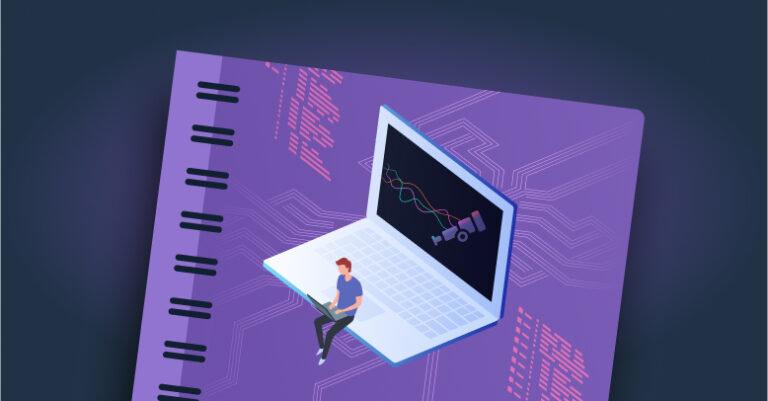
The Complete Guide to Observability as a Service
September 14, 2023
In the ever-evolving landscape of DevOps, the importance of observability cannot be overstated. Observability as a Service is a powerful concept enabling DevOps teams to gain deep insights into their systems based on external outputs.
This capability allows them to analyze multiple monitoring data, correlate information, and employ advanced mechanisms to understand the state of the system.
We’ll delve into what Observability as a Service is, why it matters for DevOps teams, explore its various components, discuss the benefits of implementing it for cloud-native applications, and provide guidance on getting started.
We’ll also cover best practices, cost considerations, and key features to look for when choosing an Observability as a Service solution.
What is Observability as a Service and Why Does it Matter for DevOps Teams?
Observability as a Service is a software-based capability that provides DevOps teams with in-depth visibility into their systems by analyzing external outputs. This holistic approach allows for a comprehensive understanding of system behavior, which is essential for optimizing performance, increasing agility, and enhancing IT operations.
Utilizing this model follows the typical Software as a Service model with which many should be familiarized. Instead of using self-hosted solutions, your model relies on outside providers for the software.
Here’s what having a robust Observability as a Service capability offers your organization:
Actionable intelligence. Observability as a Service empowers DevOps teams with critical, actionable intelligence on system health. By closely monitoring the system and its components, teams will identify issues promptly and make informed decisions for improvement.
Performance optimization. By uncovering bottlenecks, resource constraints, and other factors that impact performance you’ll be continuously optimizing your system observability software. This knowledge helps teams fine-tune their applications for optimal user experiences.
Agility enhancement. With observability, DevOps teams gain the agility to respond quickly to changing conditions and evolving user needs. They can make adjustments and deploy updates more efficiently. This is especially important at a time when teams are often limited by smaller
Efficient issue identification and resolution. Observability components work in synergy to efficiently identify and resolve issues. This reduces downtime and ensures smooth operations.
Exploring Observability as a Service Components
Observability as a Service consists of several key components that provide comprehensive insights into system behavior, including the key telemetry types for any observability system. These components include:
Log Analytics. Offering the collection and analysis of log files generated by various components of the system, log analytics helps with troubleshooting and identifying issues by examining detailed records of system activities.
Infrastructure Monitoring. Tracking key performance indicators (KPIs) and system metrics in real-time, infrastructure monitoring provides valuable data for assessing system health and performance. Maintaining these metrics can help you keep tabs on everything going on in your system that you believe is important to measure.
Distributed Tracing. This key observability telemetry type allows DevOps teams to trace requests as they travel through different microservices and components. Distributed tracing helps in identifying bottlenecks and latency issues in complex, distributed systems.
Event Correlation. The process of identifying patterns and relationships between different events within the system is a critical component of any Observability as a Service system. It helps in understanding how events are interconnected and their impact on system behavior.
Event correlation can help engineers overcome analysis challenges and reduce MTTR for production issues. Having a single pane of glass where all your relevant telemetry data is correlated automatically can help you get to the bottom of challenges faster.
Anomaly Detection. Especially for organizations looking to scale systems and scale their observability practice, anomaly detection is essential.
With data coming in through numerous components—potentially hundreds and thousands of them—having anomaly detection automated through AL/ML capabilities becomes so important. Algorithms used for this should be trained on large datasets of normal behavior and detect a wide range of different anomalies.
These capabilities should allow you to accelerate debugging and troubleshooting to reduce service interruptions, and identify anomalous data spikes to reduce costs as well.
End-User Monitoring. End-user monitoring involves observing the system from the perspective of end-users. It provides insights into user experiences and helps in addressing issues that directly impact customers.
Alerting and Notifications. These ensure you’re notified of critical events. Configuring the right alerts is the foundation of any proactive development, DevOps, and validation practice for observability.
A good alerting system should meet your observability use case, and alert you on measures critical to your business and product needs. Those alerts should be delivered to your relevant stakeholders on multiple pathways to ensure they get to the right people for quick action.
Collectively, these components offer a comprehensive understanding of the system’s performance and enable efficient issue identification and resolution.
The Benefits of Using an Observability Platform for Your Cloud-Native Applications
Implementing an observability platform for cloud-native applications brings several compelling benefits:
Instant Visibility into Cloud Services. A good platform for observability should provide instant visibility into services offered by public cloud vendors. This helps in detecting issues by observing both inputs and outputs, ensuring seamless cloud operations.
Real-Time Performance Monitoring. Your Observability as a Service platform will enable real-time performance monitoring, allowing teams to identify and resolve issues promptly. This proactive approach minimizes downtime and improves user experiences.
Data-Driven Decision-Making. You’ll get help in making data-driven decisions by providing insights into the system’s current state based on the data it generates from your platform. This is crucial for managing cloud-native environments effectively.
Scalability and Flexibility. Observability solutions are designed to scale with your applications. As your system grows, these platforms can adapt to handle increased monitoring needs, ensuring your observability infrastructure remains robust.
How to Get Started with an Observability as a Service Platform
When it comes to your choices for an observability deployment model, you have the choice of using either the SaaS model (and thus observability as a service) or a self-hosted model. A SaaS model can lower your upfront costs and TCO, but a self-hosted model could provide more personalization and a better handle on your data and its security. Your organization has to consider what is best for your use case.
In this post, we are focusing on the best way to go about doing Observability as a Service as opposed to a self-hosted model. To harness the power of Observability as a Service, follow these steps to get started:
Assess Your System’s Requirements and Objectives. Every system is different and has a specific set of needs, regardless of what some vendors may try to tell you. There is no one-size-fits-all strategy. You need to start your process by assessing your system’s specific monitoring requirements and objectives.
Consider what you need to monitor, the level of granularity required, and the goals you want to achieve with observability.
Choose an Observability Platform. Select an observability platform that aligns with your needs. Ensure it includes components such as log analytics, metrics monitoring, distributed tracing, event correlation, and visualization tools. Choose a platform that can integrate with your existing tech stack and cloud providers.
For more information on best practices for choosing an observability platform, check out our Guide to Observability Tools and Platforms.
Integration and Configuration. Integrate the selected observability platform into your IT environment and configure it to collect relevant data. Ensure that the platform is set up to monitor the components critical to your system’s performance.
Data Analysis. Start analyzing the collected data to gain insights into system behavior. Regularly review and interpret the data to identify trends, anomalies, and areas for improvement.
Continuous Improvement. Continuously evaluate the effectiveness of the platform and adjust your strategies accordingly. As your system evolves, your observability needs may change, so adapt your observability practices to stay aligned with your goals.
Learn more about the practice of CI/CD pipelines and observability with our guide Fighting Slow and Flaky CI/CD Pipelines Starts with Observability.
Best Practices for Leveraging an Observability Platform
Optimizing your DevOps workflow using an observability platform requires the implementation of best practices across the board. By utilizing the following methods, you’ll get the most out of Observability as a Service and meet your organizational goals.
Clearly define monitoring objectives and prioritize them based on their impact on system performance and user experience. Ensure your observability efforts align with your overall business goals.
Correlation and integration need to be considered to ensure your observability platform has the capability to correlate data from different sources to provide a comprehensive view of your system. Integration with other tools and systems is crucial for a holistic understanding of your environment.
Set up automated alerts and notifications for anomalies and predefined conditions. This proactive approach enables DevOps teams to respond swiftly to critical issues, minimizing downtime and user impact.
Regularly review and analyze data to gain meaningful insights. Establish a feedback loop where findings from observability are used to drive improvements and optimizations in your DevOps practices.
Provide training and skill development to your team members to effectively utilize the observability platform and its features. Investing in skill development ensures that your team can make the most out of the observability tools at their disposal.
Key Features to Look for When Choosing an Observability as a Service Solution
When selecting an Observability as a Service solution, consider these key features:
Comprehensive Monitoring Capabilities. Ensure the platform offers a wide range of monitoring capabilities, including log analytics, metrics monitoring, distributed tracing, event correlation, and anomaly detection. A comprehensive set of features allows for a more holistic view of your system.
Real-Time Performance Monitoring. Real-time monitoring capabilities are essential for identifying and addressing issues promptly. Look for a platform that provides real-time insights into system behavior.
Compatibility and Integration. Choose a solution that is compatible with your existing tech stack and can seamlessly integrate with popular cloud vendors and services. Compatibility ensures a smoother implementation process.
Advanced Data Analysis. Look for a platform that offers advanced mechanisms for correlating and analyzing data to provide actionable insights. The ability to detect patterns and anomalies is crucial for effective observability.
User-Friendly Interface. An intuitive and user-friendly interface is essential for easy navigation and utilization of the platform’s features. A well-designed interface can enhance the efficiency of your observability efforts.
Cost-effective systems. The cost of Observability as a Service solutions can vary based on several factors, including the scale of your infrastructure, the number of components you want to monitor, and the features offered by the platform.
Some observability solutions may offer free tiers with limited capabilities, while others are priced based on usage or subscription models.
When considering cost, it’s essential to evaluate the total cost of ownership (TCO) and the value the platform provides to your organization.
Get Started With Observability as a Service Today!
In conclusion, Observability as a Service is a game-changer for DevOps teams. It provides the tools and insights needed to optimize performance, increase agility, and enhance IT operations.
By carefully selecting the right observability platform, defining clear objectives, and following best practices, you can harness the power of observability to drive success in your DevOps workflow.
Don’t wait—start your Observability as a Service journey today with a platform that empowers your DevOps team with the visibility and actionable intelligence needed to excel in today’s dynamic technology landscape.
Sign up today for a free trial of the Logz.io Open 360™ platform for optimal, essential observability and see how it can help your organization.




